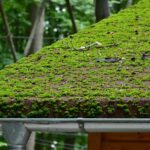When it comes to building a new home, one of the most crucial aspects that homeowners often overlook is the planning of the roof drainage system. A well-designed roof drainage system is essential to prevent water damage, mold growth, and structural issues in your home. In this article, we’ll explore how to plan roof drainage for new constructions and ensure your home remains safe and sound.

Understanding the Importance of Roof Drainage
Before diving into the specifics of planning, it’s vital to understand why roof drainage is so important. A properly designed drainage system channels rainwater away from your home’s roof and foundation. This prevents water from seeping into your home, which can lead to costly repairs and health hazards caused by mold and mildew.
Potential Risks of Poor Drainage
Poor drainage can lead to a host of problems, including:
- Water infiltration that damages the interior of your home.
- Foundation damage due to water pooling around the base of your home.
- Mold and mildew growth, which can affect indoor air quality.
- Erosion of landscaping around your home.
Key Considerations for Planning Roof Drainage
When planning your roof drainage system, consider the following factors:
1. Roof Pitch and Design
The pitch and design of your roof will significantly impact how water drains from it. A steeper roof pitch allows for faster water runoff, while a flat or low-slope roof may require additional drainage solutions.
2. Climate and Weather Patterns
Understanding the local climate and weather patterns is crucial in roof drainage planning. Areas with heavy rainfall or snow may require more robust drainage systems to handle the volume of water.
3. Gutter and Downspout Design
Gutters and downspouts are essential components of any roof drainage system. Proper sizing and placement ensure efficient water flow and prevent clogs and overflow.
For more detailed information on gutter systems, you can check out this guide.
4. Drainage Solutions for Flat Roofs
Flat roofs require specialized drainage solutions, such as internal drains or scuppers, to effectively manage water flow.
Steps to Plan Your Roof Drainage System
Step 1: Conduct a Site Assessment
Begin by conducting a thorough assessment of your property to understand the topography, soil type, and natural water flow patterns. This information will help you determine the best drainage solutions for your home.
Step 2: Choose the Right Materials
Select high-quality materials for your gutters, downspouts, and other drainage components. Investing in durable materials will ensure the longevity and effectiveness of your system.
Step 3: Design a Comprehensive Drainage Plan
Work with a professional to create a comprehensive drainage plan that takes into account your roof’s design, climate, and site conditions. This plan should include detailed specifications for gutters, downspouts, and any additional drainage solutions needed.
Step 4: Implement the Plan
Once you have a solid plan in place, it’s time to implement it. Hire experienced contractors to install your roof drainage system according to the design specifications.
Step 5: Regular Maintenance
Regular maintenance is essential to keep your roof drainage system functioning optimally. This includes cleaning gutters and downspouts, inspecting for leaks or damage, and making repairs as needed.
For tips on maintaining your roof drainage system, visit this page.
FAQs About Roof Drainage Systems
1. What are the most common types of roof drainage systems?
Common types of roof drainage systems include gutters and downspouts, internal drains, and scuppers. The choice depends on your roof type and local climate.
2. How often should I inspect my roof drainage system?
It’s recommended to inspect your roof drainage system at least twice a year, preferably in the spring and fall, to ensure it’s functioning correctly.
3. Can I install a roof drainage system myself?
While some homeowners may choose to install their own systems, it’s usually best to hire professionals who have the experience and knowledge to ensure proper installation.

Conclusion
Planning a roof drainage system for new constructions is an essential step in protecting your home from water damage. By understanding the importance of drainage, considering key factors, and following a structured planning process, you can ensure your home remains safe and dry for years to come. Remember to consult with professionals and invest in quality materials to achieve the best results.
This article contains affiliate links. We may earn a commission at no extra cost to you.








